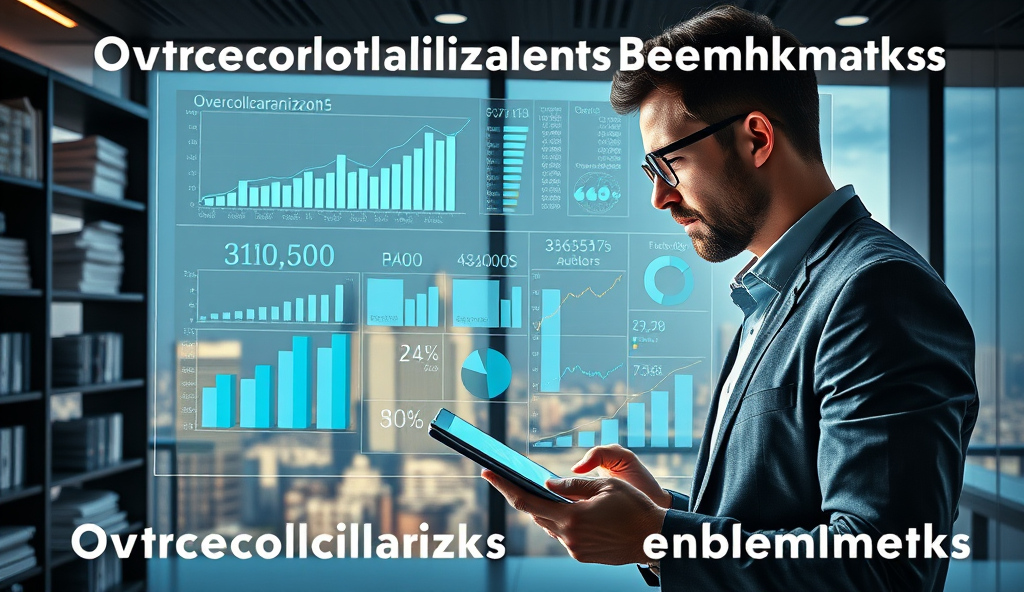Introduction to Overcollateralization in Stablecoins
Overcollateralization serves as the bedrock of trust in decentralized stablecoins requiring borrowers to lock more value than they receive. Platforms like MakerDAO enforce 150% collateral coverage benchmarks for DAI ensuring stability even during market volatility.
This risk mitigation strategy contrasts with traditional finance where loan-to-value ratio guidelines rarely exceed 80-90%. Crypto lenders demand higher secured lending thresholds due to asset price fluctuations and smart contract risks.
Understanding these credit enhancement metrics becomes crucial when evaluating stablecoin safety as we explore why overcollateralization matters in DeFi next. The practice creates buffers against liquidation cascades while maintaining peg stability across market cycles.
Key Statistics

Why Overcollateralization Matters in DeFi
Overcollateralization serves as the bedrock of trust in decentralized stablecoins requiring borrowers to lock more value than they receive.
Overcollateralization acts as DeFi’s shock absorber during extreme volatility, preventing systemic failures when asset prices plummet unexpectedly. The 2020 Black Thursday event demonstrated this when MakerDAO’s 150% collateral coverage benchmark prevented DAI’s collapse despite ETH’s 50% price drop.
This safety mechanism also maintains stablecoin pegs by ensuring sufficient asset-backed security requirements exist to cover redemptions during market stress. Unlike fractional reserve banking, DeFi’s transparent loan-to-value ratio guidelines eliminate counterparty risk through verifiable on-chain collateral.
As we examine common overcollateralization benchmarks next, remember these credit enhancement metrics directly correlate with a stablecoin’s resilience during crises. Higher secured lending thresholds ultimately determine which projects survive prolonged bear markets versus those vulnerable to liquidation spirals.
Common Overcollateralization Benchmarks for Major Stablecoins
The 2020 Black Thursday event demonstrated this when MakerDAO's 150% collateral coverage benchmark prevented DAI's collapse despite ETH's 50% price drop.
Leading DeFi stablecoins maintain distinct collateral coverage benchmarks reflecting their risk tolerance and asset composition. MakerDAO’s DAI enforces a 150% minimum ratio for ETH-backed loans while requiring 170% for volatile assets like WBTC, creating tiered security buffers against market shocks.
These loan-to-value ratio guidelines adapt dynamically based on volatility indexes and historical drawdown analysis.
USD Coin (USDC) and Tether (USDT) employ lower collateralization thresholds around 102-110% when minted against fiat reserves, though their centralized models differ fundamentally from DeFi’s verifiable asset-backed security requirements. Frax Finance hybridizes both approaches with partial collateralization (92-95%) supplemented by algorithmic stabilization mechanisms, demonstrating how credit enhancement metrics evolve across stablecoin architectures.
These secured lending thresholds directly influence liquidation risks during market stress, as seen when Liquity’s 110% minimum ratio for ETH-backed loans triggered mass liquidations during May 2021’s flash crash. Such events validate why DAI’s conservative benchmarks remain the industry reference point, which we’ll examine next in detail.
DAI: The Gold Standard for Overcollateralization
MakerDAO's DAI enforces a 150% minimum ratio for ETH-backed loans while requiring 170% for volatile assets like WBTC creating tiered security buffers against market shocks.
MakerDAO’s DAI exemplifies rigorous overcollateralization standards, maintaining a 150% minimum ratio for ETH-backed loans and 170% for higher-risk assets like WBTC, as highlighted in previous sections. These tiered thresholds provide a safety net against volatility, validated during market downturns when competitors faced mass liquidations at lower collateral coverage benchmarks.
The protocol dynamically adjusts loan-to-value ratio guidelines based on real-time volatility indexes, ensuring asset-backed security requirements adapt to changing market conditions. For instance, during the 2022 Terra collapse, DAI’s overcollateralization framework prevented destabilization while algorithmic stablecoins faltered, reinforcing its reputation as DeFi’s most resilient decentralized stablecoin.
This conservative approach contrasts sharply with the partial collateralization models of centralized alternatives like USDC and USDT, which we’ll explore next. DAI’s success demonstrates how higher secured lending thresholds effectively mitigate systemic risks in decentralized finance, setting the benchmark for capital adequacy collateral standards industry-wide.
USDC and USDT: Partial vs. Full Collateralization
Unlike DAI's decentralized overcollateralization model centralized stablecoins like USDC and USDT operate with partial collateralization typically maintaining 1:1 dollar backing but with varying asset compositions.
Unlike DAI’s decentralized overcollateralization model, centralized stablecoins like USDC and USDT operate with partial collateralization, typically maintaining 1:1 dollar backing but with varying asset compositions. Circle’s quarterly attestations reveal USDC holds 80-90% in cash and short-term Treasuries, while Tether’s reserves include riskier commercial paper and corporate bonds, raising questions about liquidity during stress events.
These differences in collateral quality became evident during March 2023’s banking crisis when USDC temporarily depegged after $3.3 billion of its reserves were trapped in Silicon Valley Bank, whereas Tether faced redemption pressures due to its opaque commercial paper exposures. Such incidents highlight how partial collateralization introduces counterparty risks absent in overcollateralized decentralized models like MakerDAO’s framework.
While centralized stablecoins offer capital efficiency advantages, their lower secured lending thresholds create systemic vulnerabilities that emerging hybrid stablecoins aim to address through innovative collateralization strategies we’ll examine next. This evolution reflects the industry’s ongoing search for optimal balance between safety and scalability in stablecoin design.
Emerging Stablecoins and Their Collateralization Strategies
Protocols should assess collateral coverage benchmarks by stress-testing assets against historical volatility as MakerDAO does with its 150% minimum ratio for ETH-backed DAI.
New hybrid stablecoins like Frax and LUSD combine decentralized governance with dynamic collateralization, using algorithmic adjustments to maintain stability while optimizing capital efficiency. Frax’s fractional-algorithmic model, for instance, balances 92% collateral backing with 8% algorithmic supply adjustments, offering a middle ground between DAI’s overcollateralization and USDC’s centralized backing.
These innovations address systemic vulnerabilities by incorporating real-time risk metrics, such as LUSD’s 110% minimum collateral ratio that automatically adjusts during market volatility. Projects like Reserve Protocol take this further with multi-asset baskets including tokenized real-world assets, diversifying beyond crypto-only collateral while maintaining transparency through on-chain verification.
As these models evolve, they face critical tests in balancing loan-to-value ratio guidelines with redemption guarantees, a challenge that leads directly to examining the risks of under-collateralized alternatives in DeFi. This tension between innovation and security remains central to stablecoin development as the sector matures.
Risks of Under-Collateralized Stablecoins in DeFi
Under-collateralized stablecoins like TerraUSD (UST) collapsed in 2022 when its algorithmic backing couldn’t sustain peg pressure, wiping out $40B in market value. These models rely heavily on arbitrage incentives and demand growth rather than tangible asset coverage, exposing users to reflexive liquidation spirals during market stress.
Even hybrid models with partial collateralization face redemption risks if algorithmic components fail to adjust supply dynamically, as seen when Frax’s FXS token dropped 60% during the 2023 banking crisis. Unlike LUSD’s 110% minimum ratio, under-collateralized designs lack buffer zones for extreme volatility scenarios.
This vulnerability underscores why protocols like MakerDAO maintain 150%+ overcollateralization ratios, a safeguard we’ll examine next when evaluating optimal coverage benchmarks. The tradeoff between capital efficiency and systemic risk remains pivotal for stablecoin architects.
How to Evaluate Overcollateralization Ratios for Safety
Protocols should assess collateral coverage benchmarks by stress-testing assets against historical volatility, as MakerDAO does with its 150% minimum ratio for ETH-backed DAI. Loan-to-value ratio guidelines must account for asset correlation risks, exemplified by Liquity’s 110% floor for LUSD that survived multiple market crashes.
Credit enhancement metrics should incorporate liquidation penalties and time delays, with Frax’s 2023 crisis showing how slow arbitrage mechanisms exacerbate redemption pressures. Asset-backed security requirements differ by collateral type, as seen in Aave’s tiered system where stablecoins require 120% coverage versus 150% for volatile assets.
These risk mitigation collateral levels create buffer zones against reflexive sell-offs, a lesson underscored by Terra’s collapse. Next, we’ll analyze how inadequate ratios triggered specific stablecoin failures in our case studies section.
Case Studies: Stablecoin Failures Due to Poor Collateralization
The TerraUSD collapse demonstrated how algorithmic designs without proper collateral coverage benchmarks fail during market stress, with its 80% LTV ratio proving insufficient when LUNA’s price plummeted 99% in May 2022. Iron Finance’s TITAN token similarly collapsed in June 2021 when its partial collateralization couldn’t absorb redemption demands during a bank run scenario.
Frax Finance’s 2023 liquidity crisis revealed how even 100% collateralization becomes inadequate without proper loan-to-value ratio guidelines for volatile assets, as slow arbitrage mechanisms delayed price corrections. These cases contrast with MakerDAO’s survival through multiple crashes thanks to its 150% overcollateralization ratio for ETH-backed DAI.
These failures underscore why structured finance collateral benchmarks must account for worst-case scenarios, not just average market conditions. Next, we’ll examine how prudent investors can apply these lessons when evaluating stablecoin safety parameters.
Best Practices for DeFi Investors Using Stablecoins
Smart stablecoin allocation requires verifying collateralization ratios exceed 150% for volatile assets like ETH, following MakerDAO’s proven model that weathered multiple market crashes. Investors should prioritize protocols with dynamic LTV adjustments, as seen in Aave’s risk parameters that automatically tighten during volatility spikes.
Diversification across collateral types mitigates concentration risk, combining crypto assets with real-world assets like Centrifuge’s tokenized invoices. Always monitor liquidation mechanisms, ensuring they can handle 50%+ price drops without system failure, a lesson from Frax Finance’s delayed arbitrage issues.
These precautions create a defensive portfolio while maintaining yield opportunities, setting the stage for our final discussion on balancing safety and efficiency. Historical failures prove that cutting corners on collateral standards inevitably leads to protocol collapse when markets turn.
Conclusion: Balancing Safety and Efficiency in Stablecoin Investments
Navigating stablecoin investments requires striking a delicate balance between robust collateral coverage benchmarks and capital efficiency, as evidenced by leading protocols like MakerDAO maintaining 150%+ overcollateralization ratios. While higher thresholds enhance safety, they also limit liquidity, creating trade-offs that investors must weigh based on risk appetite and market conditions.
Real-world examples like DAI’s resilience during market downturns demonstrate how structured finance collateral benchmarks can mitigate systemic risks without stifling growth. However, overly conservative loan-to-value ratio guidelines may deter adoption, highlighting the need for dynamic models that adapt to volatility.
As DeFi evolves, the interplay between credit enhancement metrics and user experience will shape stablecoin adoption globally. Investors should prioritize protocols with transparent risk mitigation collateral levels while remaining agile to emerging innovations in capital adequacy standards.
Frequently Asked Questions
How can I verify if a stablecoin's overcollateralization benchmarks are sufficient for safety?
Check the protocol's real-time collateralization dashboard like MakerDAO's Oasis.app and ensure ratios exceed 150% for volatile assets.
What tools can help me monitor changes in a stablecoin's loan-to-value ratio guidelines?
Use DeFiLlama's stablecoin tracker or RiskDAO's liquidation risk dashboards to receive alerts on collateral parameter updates.
Can I trust stablecoins with lower overcollateralization ratios than DAI's 150% benchmark?
Exercise caution and diversify holdings – protocols like Frax with 92-95% ratios carry higher risk during market crashes.
How often should I reassess a stablecoin's collateral coverage benchmarks?
Review quarterly attestations for centralized stablecoins and monitor governance proposals weekly for DeFi protocols adjusting parameters.
What red flags indicate a stablecoin's overcollateralization framework may be inadequate?
Watch for frequent governance votes to lower ratios or reliance on illiquid collateral – both were precursors to Terra's collapse.





